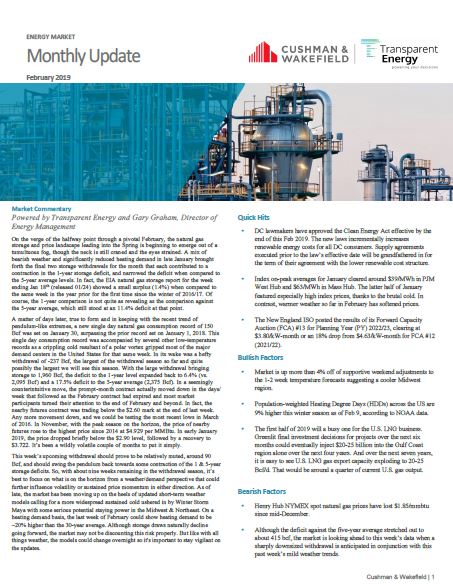Those of us who regularly follow the natural gas market will readily profess this simple truth: natural gas prices have been progressively sliding since November 2019 and are now at historic lows. The lows are no longer historic from a three-to-five-year perspective, they are nearing all-time lows. In fact, we are now seeing prices in the spot market that haven’t been eclipsed since 1999; at last week’s low of $1.83/MMBtu, the energy commodity was trading at its lowest price for January in twenty-one years. The February 2020-April 2020 forward contracts continue to all trade below the $2/MMBtu mark, while the summer packages also continue to move closer to that psychological barrier. To put this in a recent perspective, natural gas futures are now over 60% lower than the most recent highs witnessed in November of 2018.
How did we get here? Simply put, overall supply growth steadily increased during that time period, while demand has failed to keep up in any meaningful way; the market is structurally oversupplied. Dry gas production has been expanding for 138 consecutive weeks, and storage levels (2,947 Bcf) are now significantly in surplus when compared both to this point last year (+23.3%) and the five-year average (+9.3%). The largest withdrawal this winter has been -161 Bcf, and withdrawals since then have only averaged -76 Bcf, an extraordinarily low figure considering we are in peak demand season. As it stands, the weather picture for early February means there isn’t much room to improve the oversupplied condition – there could be some technical support on the horizon, but come springtime (and potentially even before), we could see natural gas prices test the $1.611 low that we saw at the end of peak demand season in 2016.
- A group of lawmakers from North and South Carolina proposed legislation that would study electricity market reforms in order to break up utility monopolies and create a more competitive system.
- Lower 48 production continues to trend downward throughout January 2020, dropping sharply to 93 bcf/d, the lowest since September of last year.
- The winter season is continuing its trend of mild short-term weather, with highs being forecasted in the 30s to 50s throughout the northern US and in the 50s to 70s across the southern states.
To learn more about these developments and to get the latest prices, trends, data highlights, and temperature probabilities, read the full energy update.
If you have any questions, Gary Graham, director of energy management, can take you through the report.





